Extra Mile: The Accidental Tribe of Highpointers
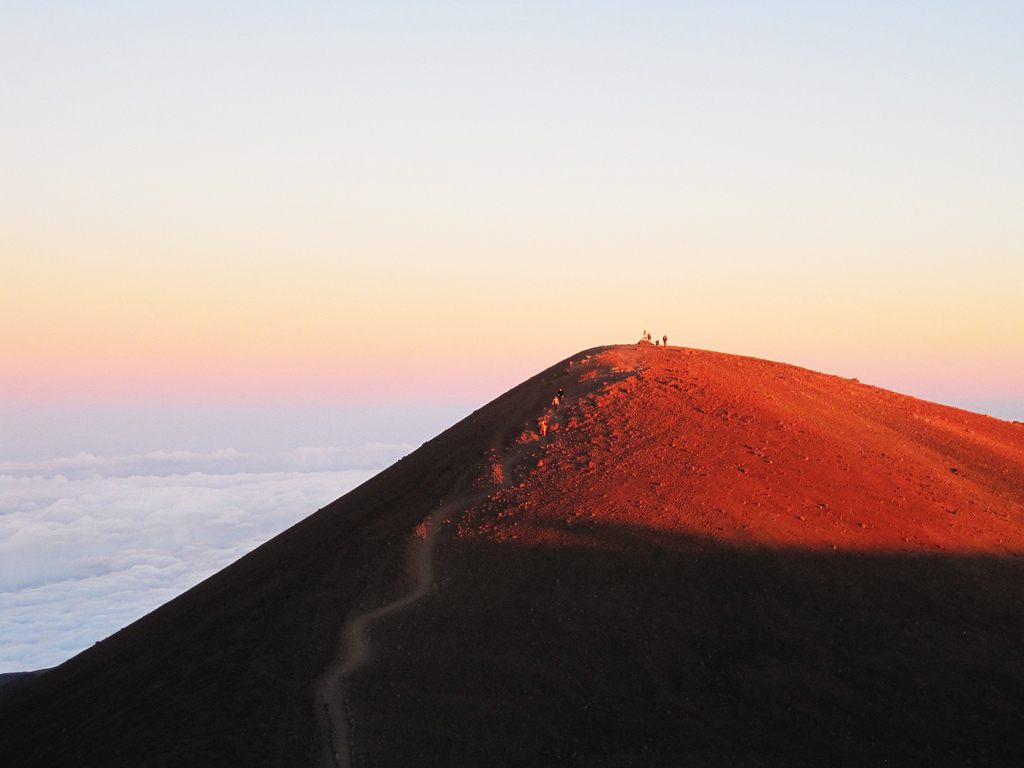
The peak of Mauna Kea, Hawaii (Photo: apasciuto/Flickr)
Britton Hill is a blip on the side of Florida’s County Road 285, a small highway near the state’s border with Alabama. The site is modestly appointed with a granite, tombstone-like marker and two park benches. The average Florida tourist, bound for a hot beach or the splashy allure of Disney World, might stop to stretch their legs. But more likely, they would just roll on.
Unless they were a highpointer. Unremarkable as it seems, at 345 feet above sea level, Britton Hill is the highest natural point in the state. A highpointer, driving for hours or perhaps days, maybe from the other side of the country would arrive triumphant and leave their mark in the register. One point closer to victory..
As the name suggests, highpointers are people who aspire to climb the highest natural points in every state. The drive to get really, really high up is an old one; to quote the famed climber George Mallory, the motivation of looking at a mountain and wanting to reach the top boils down to “because it’s there.” But on the state level, the history is a bit more recent. In 1936 A.H. Marshall became the first man to climb all of the then 48 state highpoints. At that time, there was no official network, although all over the country, people were individually making the decision to seek out these places.
Jack Longacre was working for the shipbuilding division of Boeing in Seattle when he started mountaineering in the late ‘80s. After retiring, he drove across the country, racking up highpoints as he went. Most highpoints have a trail log at their peak for visitors to sign and Longacre was seeing a lot of familiar names. He posted a notice in the back of Outside magazine in 1986 seeking people similarly elated by elevation. After several people responded positively, in 1987, a group of about eight decided to gather at Mount Arvon, Michigan’s highest point. (Highpoints are determined by geological surveys, and therefore they occasionally change. For years, nearby Mount Curwood was thought to be the highest point until a 1982 resurvey revealed Mount Avron to be one foot higher.) The Highpointers Club was born, and the meeting is considered the club’s first convention. “Guru Jakk,” as he was known, pecked out club missives on his typewriter and sent handwritten notes to new members. He was fond of using a “k” in lieu of a “c”, urging people to “Keep Klimbin’!”
Longacre died in 2002. Today, the club has about 2,500 members.
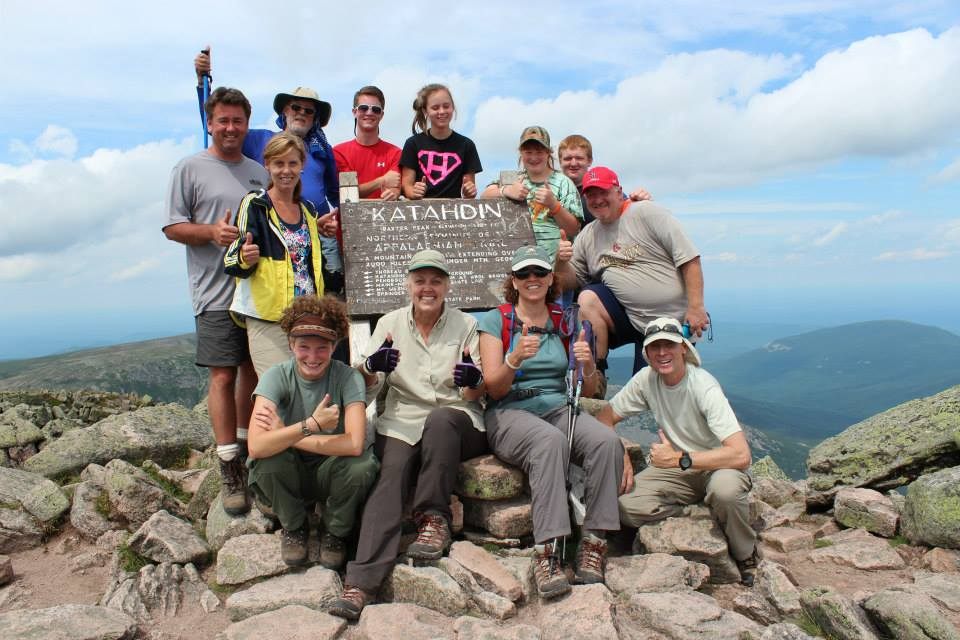
Highpointers on the summit of Mount Katahdin, Maine during the 2013 Highpointers Konvention (Photo: Tim Webb)
An avid hiker, Tim Webb spends a fair amount of time poring over his Rand McNally road atlas. He always felt the tug of the highpoints, clearly marked on each state map. The urge eventually led him to the Highpointers Club, where he is the current president. For $20 a year, members receive the “Apex to Zenith” newsletter and an annual directory packed with tips and contact information.The club also holds an annual “Konvention” at a state highpoint where members meet, swap stories, and recognize “completers” who have achieved the benchmark or 48 or 50 states in the past year.
Webb has 46 highpoints under his belt. Montana, Alaska, Washington and Wyoming (the four “tough ones”) remain. His wife, daughter and son have all climbed 36 highpoints. (His daughter made some of those journeys as an infant strapped to her father.) Everyone has their favorite highpoint for different reasons, he says, but for him it’s Mount Whitney, the highest point in California and also the highest in the lower 48. It’s also where Webb hit his “half way” mark of 25 highpoints.
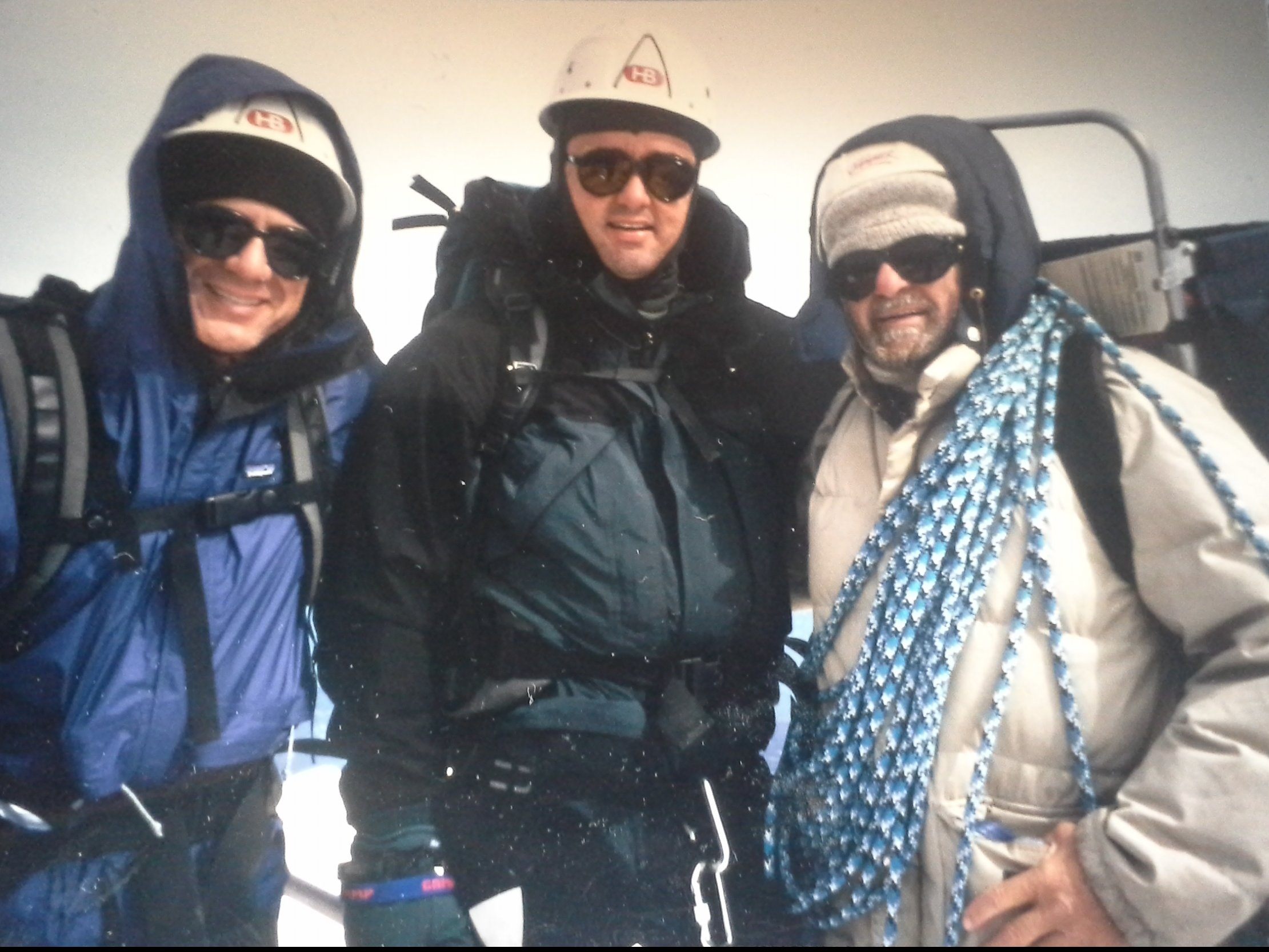
Steve Gamble, Tim Webb and Highpointers Club Founder Jack Longacre on the summit of Mount Hood, Oregon (Photo: Tim Webb)
“I must have liked it,” he says, “Because I named my daughter Whitney.”
The diversity of highpoints is staggering. The highest point in the 50 states is Mount McKinley in Alaska. The lowest is Britton Hill, the hump in Florida. There’s a weather station and an observatory on top of Mount Washington in New Hampshire. Wild ponies roam Mount Rogers in Virginia. There are highpoints like Borah Peak in Idaho where many climbers abort their trek when they hit the aptly-named Chicken Out Ridge. And then there are high points like Delaware’s Ebright Azimuth, barely a hill and about nine minutes from a Starbucks.
There are as many kinds of highpointers as there are highpoints, according to Webb. Some members save all year to attend the big meeting and some “have more money than they know what to do with.” There are whole families. There is a brother and sister from the Netherlands. There are more male completers than female, but women have been gaining ground.
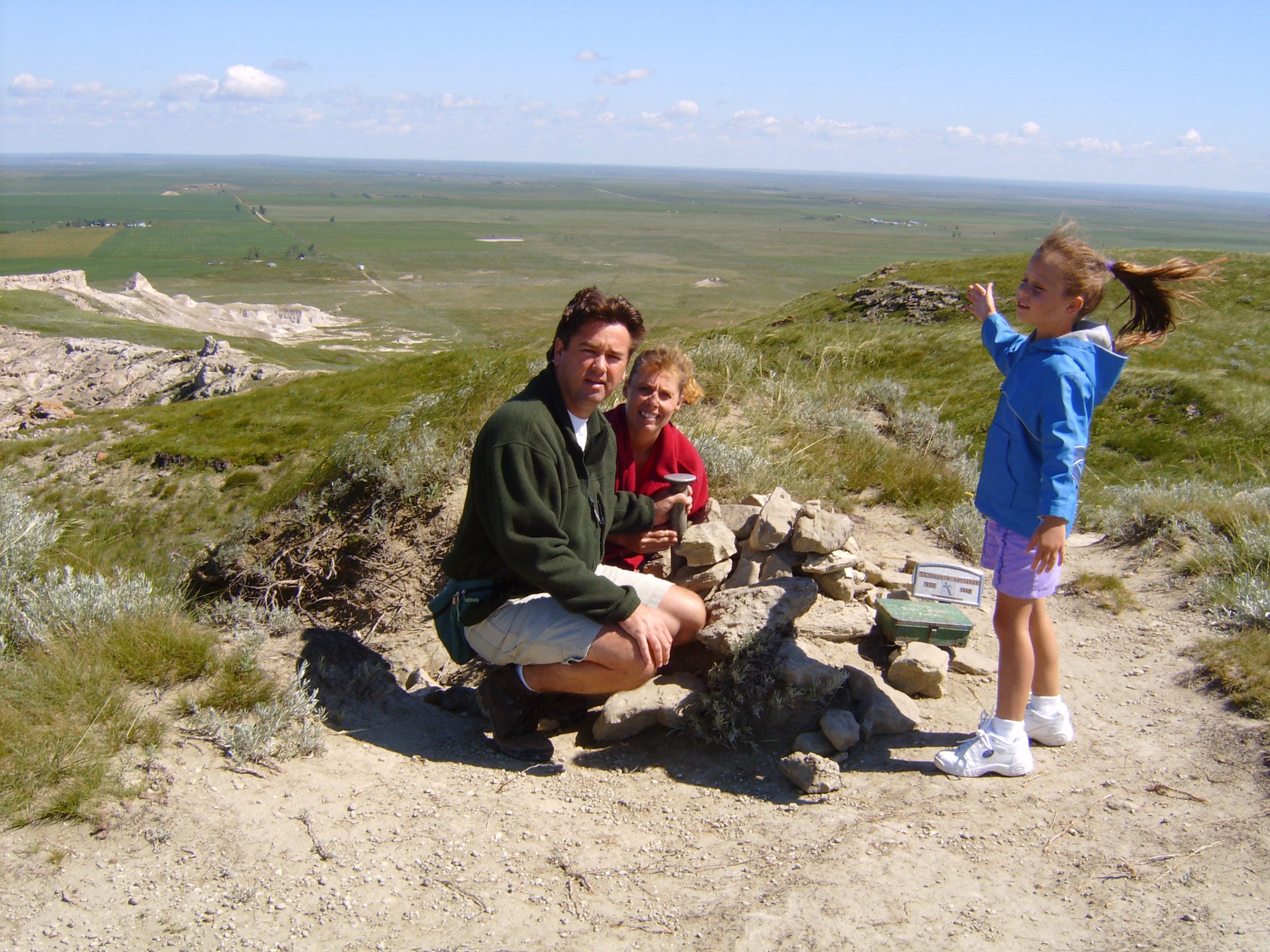
Tim at the summit of White Butte, North Dakota, with his wife Rebecca and daugther Whitney (Photo: Tim Webb)
Highpointers do seem to share one trait, though..“Highpointers seem to be list or goal oriented,” he says. “We’ve got these 50 highpoints and we need to get all of them.”
Highpointers are so obsessed, they’ve created lists within lists. There are highpointers who aim to hit the most highpoints in 24 hours. (The record is eight.) Matt and Mike Moniz collected all 50 in the shortest amount of time: 43 days, 3 hours, 51 minutes and 9 seconds. (The slowest on record is Mike Bialos, who took a leisurely 52 years and 10 months to complete.) But highpointing doesn’t have to begin and end with the state landmarks. Many state highpointers have moved onto or are concurrently conquering county highpoints. And many highpointers also tackle international targets—from storied Mount Everest to Zugspitse, the highest point in Germany, which can be summited via a picturesque gondola ride.
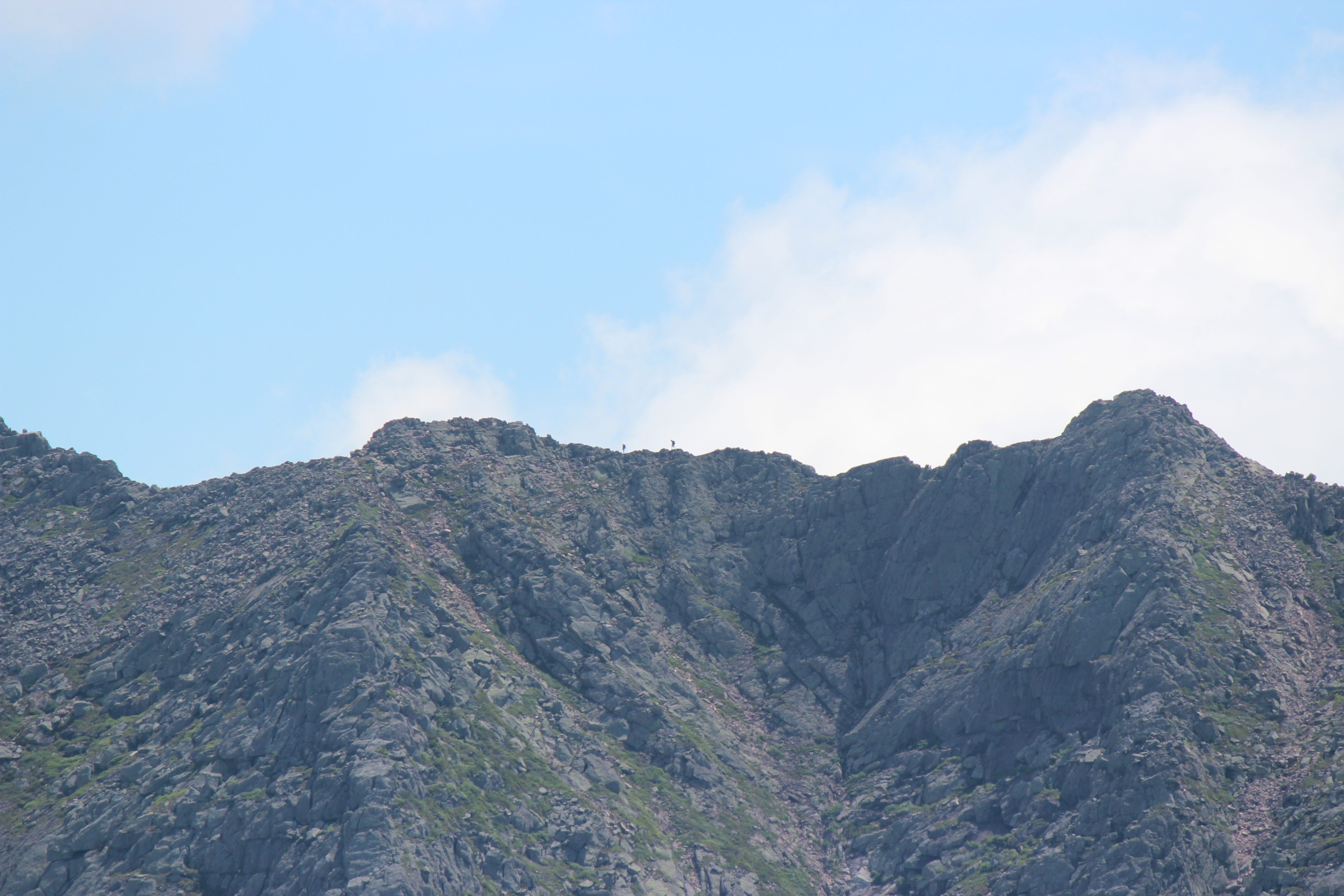
People on the ridge of Knife Edge, Mount Katahdin Maine (Photo: Tim Webb)
Tom Harper didn’t consider himself an “outdoorsy” person. Growing up in the suburbs of Pittsburgh, an occasional picnic at a state park was as intrepid as things got. But like Webb, Harper found himself fixating on the high points marked in his road atlas. In 2003, he decided to climb Mount Davis, the highest point in Pennsylvania. He has since traveled to 34 highpoints and is a member of the Highpointers Club.
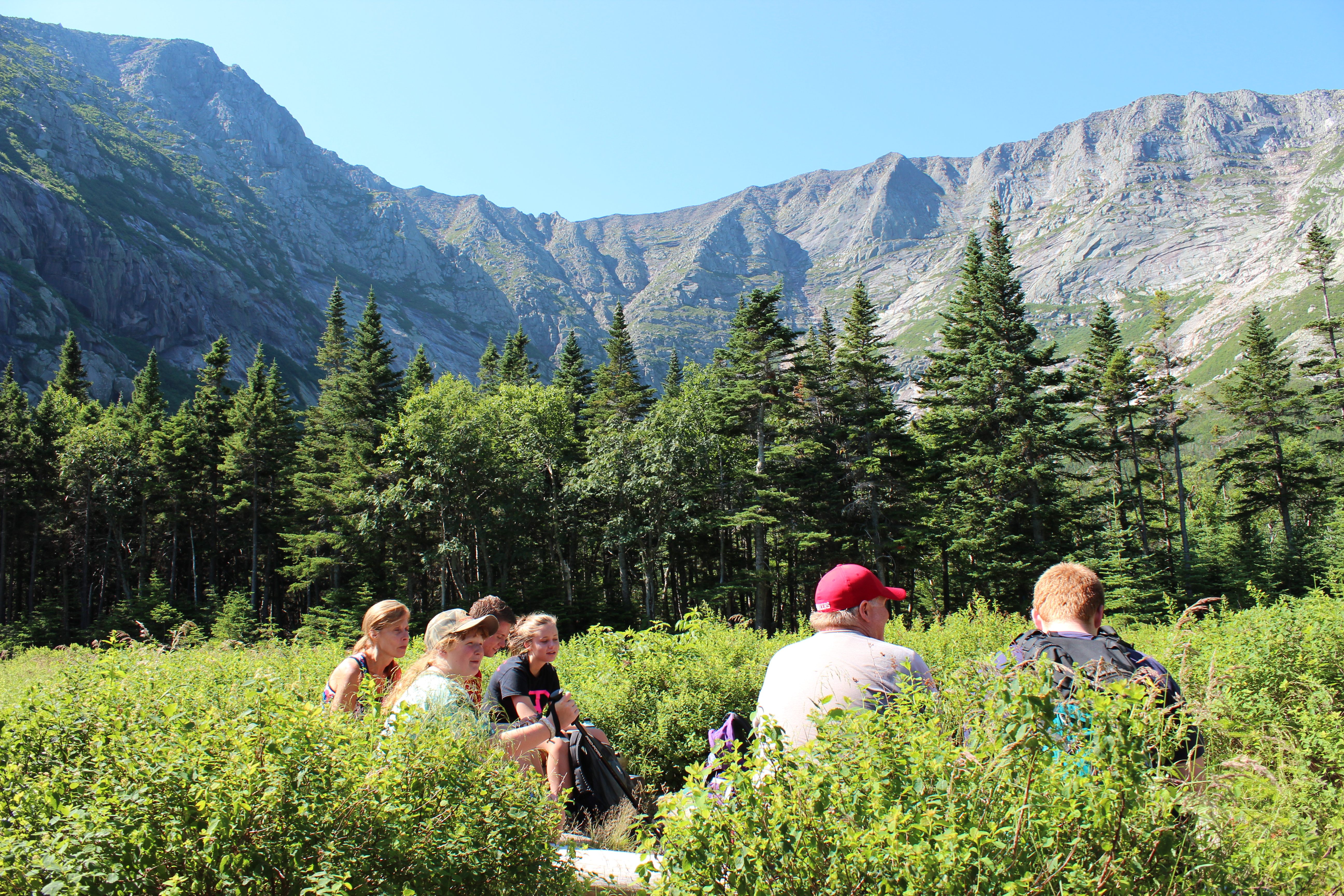 At Chimney Pond in the bowl below the summit of Mount Katahdin, Maine with several highpointers, during the 2013 Highpointers Convention (Photo: Tim Webb)
At Chimney Pond in the bowl below the summit of Mount Katahdin, Maine with several highpointers, during the 2013 Highpointers Convention (Photo: Tim Webb)
“Before I started this, most of my exercise was taping keys,” says Harper, who works as a computer programmer and says his job keeps him “tethered to civilization.”
Chasing highpoints motivated Harper to “get out and see America, really see America, not just the cities, the tourist traps, the amusement parks.”
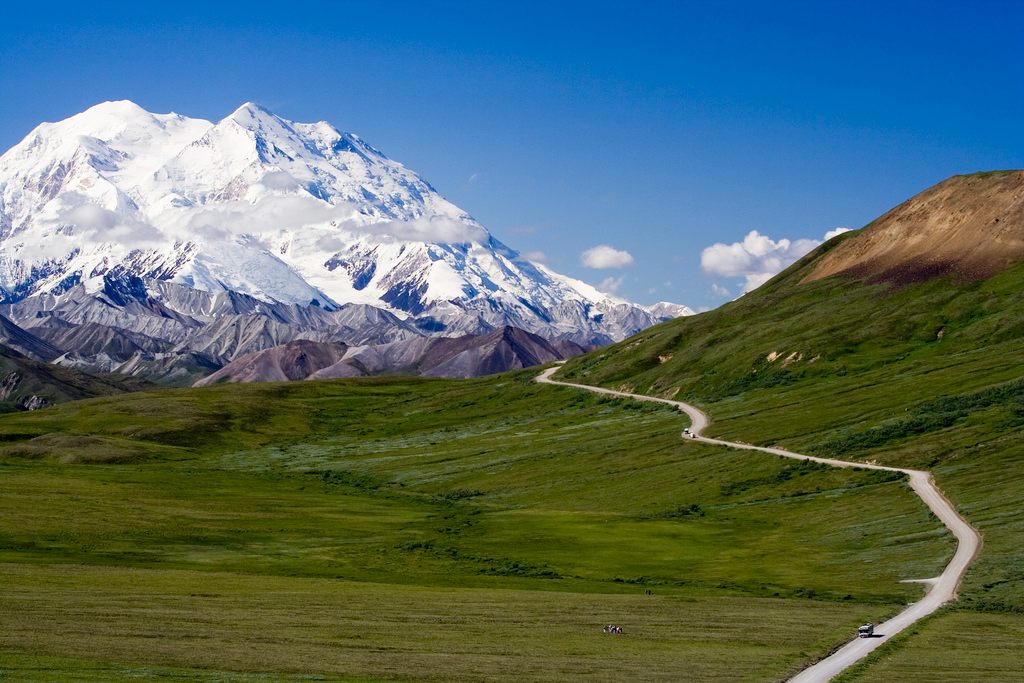
The peak of Mount McKinley, Alaska, the highest point in the 50 states (Photo: Nic McPhee/Flickr)
Harper speaks as wistfully about the flats of the Oklahoma panhandle (home to high point Black Mesa) as he does of Hawaii’s Mauna Kea where he felt like he was at the edge of the world, surrounded by a night sky unlike he had ever seen.
When Harper reaches the top of a highpoint he snaps a picture. Many highpointers keep track of their travels through photography, often taking a portrait with an elevation sign or USGS benchmark. Others fill in states on a map or keep journals.
Webb and Harper are still whittling down their lists. Webb says he hasn’t “committed” to Alaska, but hopes to cross off Montana next year, when the state convention is held in that state. Harper is still knocking off state milestones and is also tackling county highpoints. A few years ago, he climbed the Stafford County, Virginia highpoint with a fellow summiteer who was 83 at the time.
“This is what I want to do when I’m 87,” says Harper. “I want to travel the country and still hike and take in the world around me, I don’t want to be sitting in a rocking chair or dead.”
This is the first of a biweekly series on unusual travel subcultures called Extra Mile. Want to suggest one? Email edit@atlasobscura.com.
Update, 6/1: The original version of this article misidentified the state of Mount Arvon, the location of Chicken-Out Ridge and the number of highpoints that Tom Harper has visited. We regret the errors.


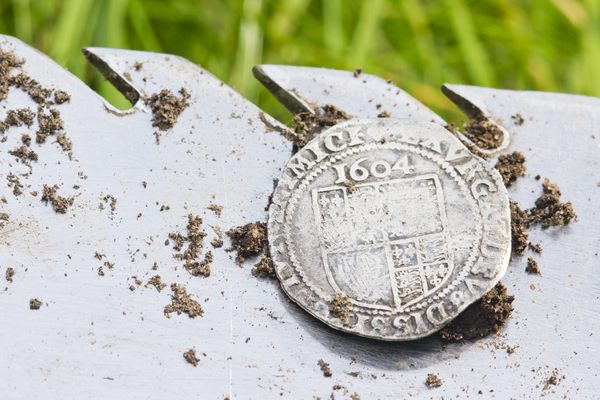




Follow us on Twitter to get the latest on the world's hidden wonders.
Like us on Facebook to get the latest on the world's hidden wonders.
Follow us on Twitter Like us on Facebook